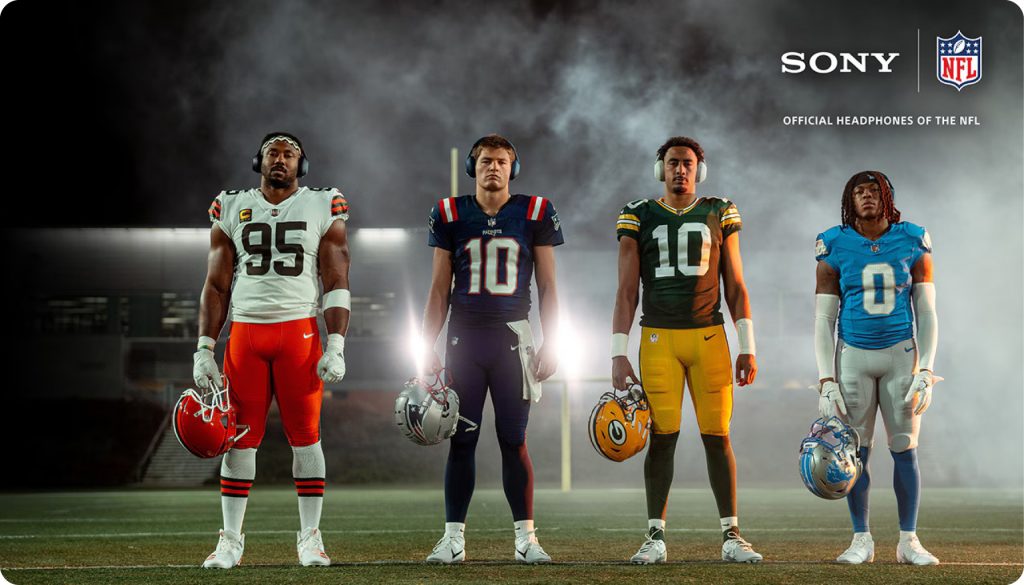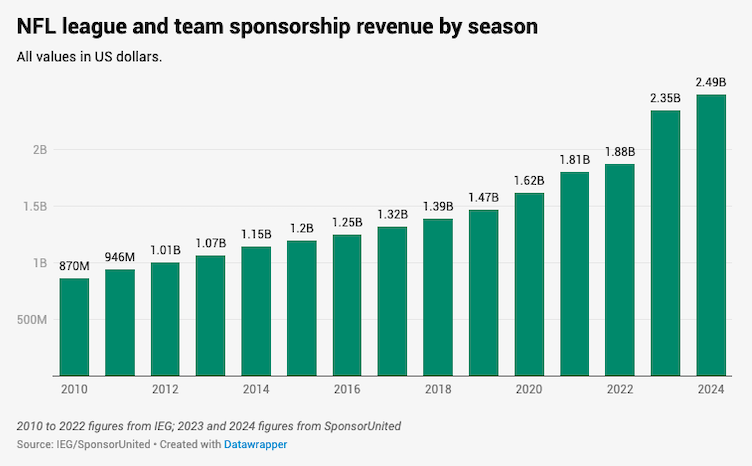
- Solutions-first partnerships that add value
- Truly tailor-made deals for each sponsor
- Long-term partnerships driving credibility and ROI
The NFL started the 2025 season with a record 43 sponsors.
The NFL’s league and team sponsorship revenues reached USD 4.29 billion last year.

The recently announced seven-year partnership with American Express is estimated to be valued at USD 130 million annually.
EA Sports, the Premier League’s Official Lead Partner, invests around USD 100 million per year.
To put that into perspective, the NFL season lasts only 4 months, less than half of the EPL season, which lasts 10 months.
The NFL certainly knows something about sponsorship.
How do they do it?
Here are the insights from SportsPro’s interview with Tracie Rodburg, NFL’s senior vice president of global partnerships.
Solutions-led sponsorships. Since 1984, when the NFL partnered with Canon to improve matchday production, the league has looked for brands that make the game better—through marketing, technology, audiences, or operations. At the same time, partnerships must deliver business value to sponsors. Making partnerships successful is a priority the NFL takes seriously.
Adapting to evolving needs. Both the NFL product and companies’ needs keep evolving with changes in society. While the football league had previously only one technology partner, now it has a roster of tech companies such as Microsoft, Adobe, NetApp, Cisco and Verizon. This has brought new solutions for new ways of engaging with fans. “Every single partner has a specific reason.”
No package is the same. Even though over 17M fans follow the league during the regular season, the commercial pitch is not based on media value. Companies’ B2B and B2C objectives are what define the package of assets, offering truly tailor-made sponsorship projects. This makes even more sense with NFL’s strict advertising rules.
Exclusivity is not for everyone. All NFL’s sponsors have access to IP rights and to an official designation, but only a few of them have full exclusivity across the league and its teams. Not only that, sideline exposure on the pitch is only reserved for brands endemic to the game: Microsoft (tablets), Sony (headsets), Nike (apparel), Oakley (eyewear) and Gatorade (coolers).
Adaptation to international games. In other markets, where LED signage is more welcomed and stadiums are better adapted to it, international games feature permanent signage at the back of the end zones and LED boards showcasing commercial partners. “Exploring the next thing” is part of the NFL’s commercial strategy.
Focus on long-term partnerships. Long-lasting partnerships reinforce product credibility, guarantee more revenue over time, create scarcity within business categories, and allow sponsors to achieve a good ROI. American Express will replace Visa as the NFL’s official credit card and payment card, ending a nearly 30-year relationship.
That’s how the NFL built a platform where brands don’t just join the game—they help shape it.
Receive my weekly post